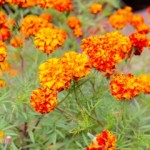Medicinal plants (either grown in your garden or purchased) can reduce your dependence on drugs and while some plants are used for treating specific ailments, others have a generalized positive effect on our health. Many herbs belonging to the latter group have since found their way into our culinary scene as flavoring agents.
Here’s our practical guide to a few of the accessible herbs that have stood the test of time:
-
Aloe Vera
Aloe Vera is well known as a skin-friendly plant and is one medicinal plant people really make use of, since it is generally safe and requires no processing before use. It is a must-have in every garden whether you grow it in pots or in the ground.
Aloe Vera plants grow well in a sunny location in warmer areas where there is not much danger of killer frosts. Being a succulent, this drought resistant plant requires very little care and thrives in poor soil. It suckers freely, so you can start with just one or two plants sourced from a reliable supplier. Note: there are several aloes around and not all of them are edible, or have the medicinal properties attributed to Aloe Vera.
The jelly-like, colorless pulp of mature leaves can be applied to minor cuts and burns and to dry, inflamed, or damaged skin due to eczema or other skin conditions. It’s an excellent moisturizer with anti-inflammatory and mild antimicrobial effect. The leaf pulp can be eaten too. Regular use can prevent constipation and relieve other digestive problems, including ulcerative colitis and irritable bowel syndrome.
-
Peppermint (Mentha × piperita)
This natural hybrid of spearmint and watermint is widely used in dental hygiene products, mouth fresheners, soothing balms and candies. Quite possibly the oldest medicinal herb to be used by man, there’s evidence that peppermint has been used for thousands of years. Grow it in a part of the garden where the plants are assured of water and give it plenty of room to spread.
Sip a tea made of a handful of peppermint leaves to calm stomach upsets and relieve pain and discomfort due to gas. Carry a few sprigs of peppermint when you travel. Sniffing on it every now and then will prevent nausea and vomiting associated with motion sickness.
The active ingredient found in abundance in peppermint is menthol (as well as in many other aromatic members of the mint family) and has a cooling effect on the skin. Make a poultice of the leaves and apply it on the skin to relieve itching and burning resulting from skin allergies and inflammatory conditions. (A poultice is a soft, moist mass of plant material applied to the body to relieve soreness and inflammation and kept in place with a cloth.)
-
Thyme (Thymus vulgaris)
This perennial herb with tiny, aromatic leaves is easy to grow in a sunny location and thrives between rocks and boulders, braving summer heat and winter freezes. The characteristic scent of thyme comes from the volatile oil containing thymol, which gets released at the slightest touch. Many herbs contain this powerful antiseptic phenolic compound, but thyme oil has more than 50% thymol content.
Use an infusion of thyme as a gargle to get rid of bad breath and mouth sores. It can help with tonsillitis and laryngitis. Crushed fresh thyme applied on the neck is said to reduce throat infections. Inhaling the vapors reduces nervous exhaustion.
The most important use of thyme is to treat respiratory tract infections. Thyme extract is taken orally to relieve symptoms of bronchitis, chest congestion and mild asthma.
Rosemary is more of a woody shrub and although it doesn’t look anything like other mint plants, it belongs to the same plant family. In your medicinal garden, rosemary is stocked for general health and wellbeing rather than for specific problems.
-
Chamomile (Chamaemelum nobile)
Chamomile flower heads can be made into a soothing tea that can calm a troubled mind as well as a colicky baby. Its widespread use across many cultures and for myriad ailments is time-tested, safe and effective.
There’s more than one type of chamomile, but we’re going to focus on the Roman chamomile, Chamaemelum nobile. This hairy plant has finely divided leaves and white daisy-like flowers with bright yellow centers, and looks similar to German chamomile, which is why scientific names are important for identifying medicinal plants.
You can make a tea from fresh flower heads or dry them for later use. Take a handful of flowers in a bowl and pour boiling hot water over them. Allow steeping for 15-20 minutes and drain. Have a cup of this soothing brew when you feel anxious or unsettled, or before bedtime in case you have difficulty falling asleep.
Use it as gargle to relieve mouth ulcers. Bathe the skin affected with eczema several times a day with cooled chamomile tea.
Pot marigold with its yellow and orange flowers is a delightful addition to any garden. Not very finicky about soil fertility or pH, it can be grown easily from seeds and can be treated as an annual or perennial depending on your growing zone.
The edible flowers can be used to treat almost any problem related to skin. Use a poultice of the petals to relieve sunburn and to clear up acne and blemishes on the skin. Use it as an antiseptic on cuts and bruises. It stops bleeding and reduces inflammation when applied on nicks and cuts. Many skin ointments contain pot marigold extract as the active ingredient.
A tea made of the flowers can be ingested to ease digestive problems.
While none of these herbs should supplant your medicinal regimen prescribed by your physician, it’s always nice to know Mother Nature can be a source for some home remedies.
NOTE: Speak with to your physiatrist to make sure none of the above herbs inadvertently have an antagonistic effect on current medications you may be taking.


